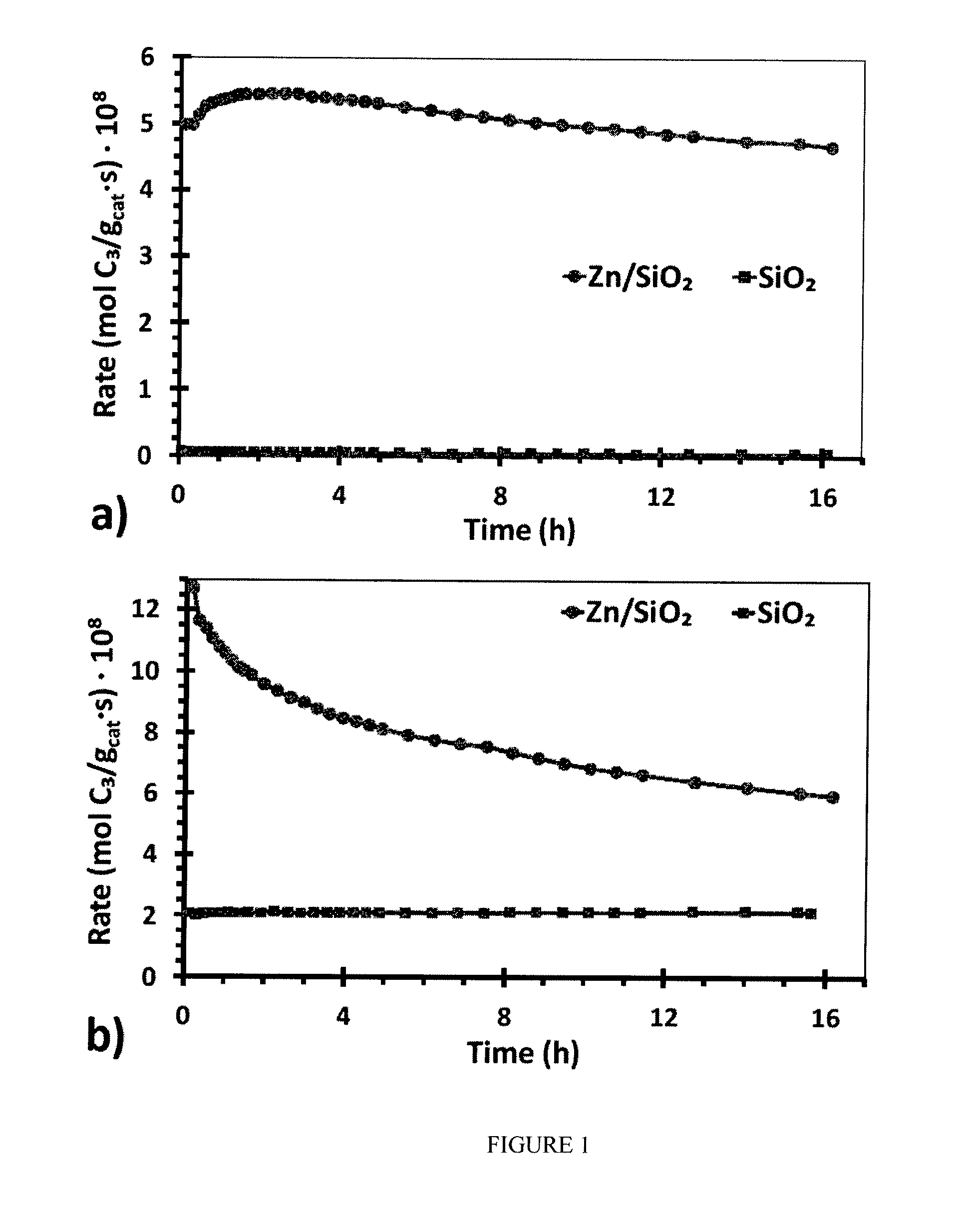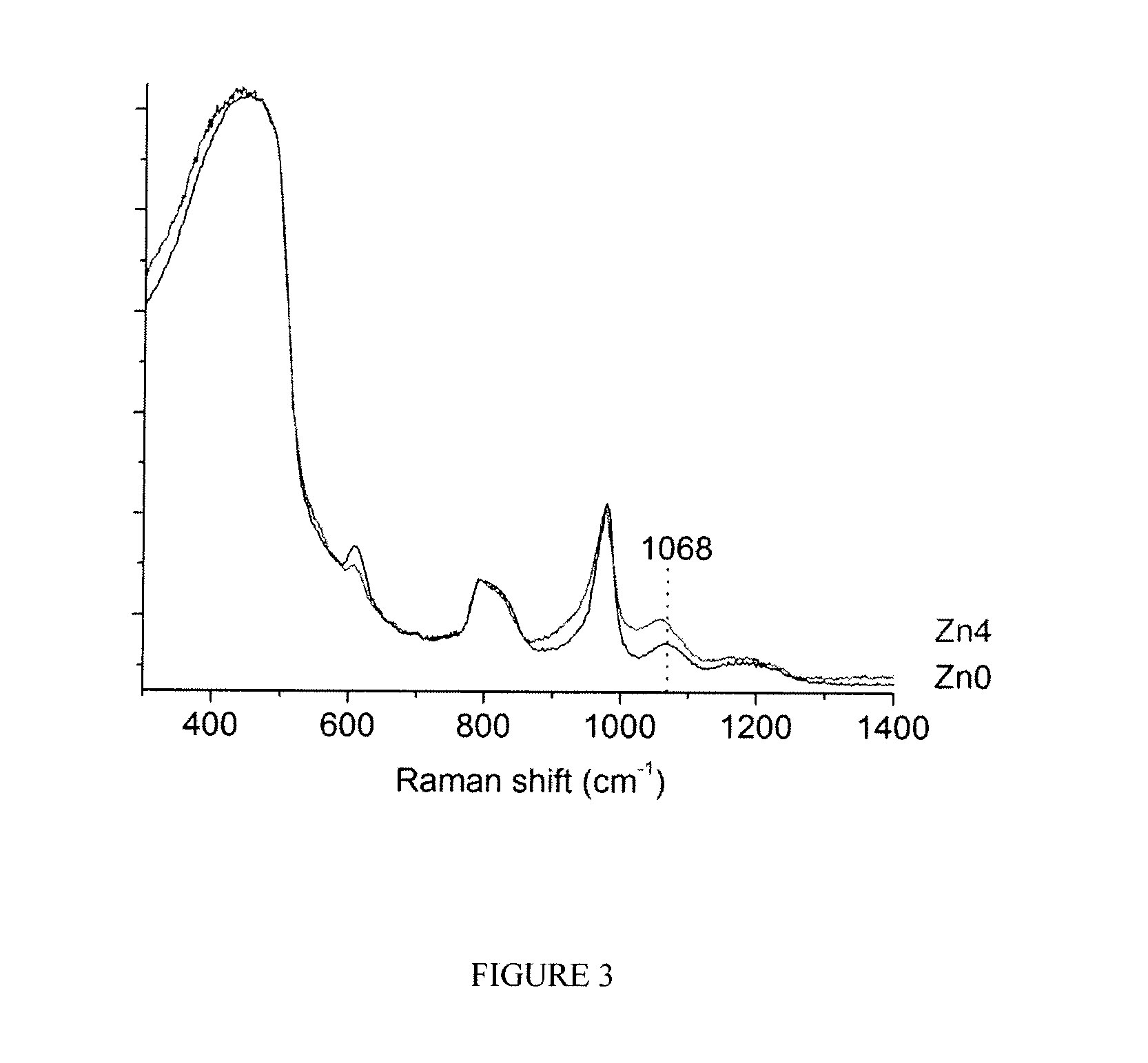Selective alkane activation with single-site atoms on amorphous support
a single-site atom and activation technology, applied in the field of olefin production, can solve the problems of rapid loss of activity, large production of propylene, and cracking of c—c and c—h products
- Summary
- Abstract
- Description
- Claims
- Application Information
AI Technical Summary
Benefits of technology
Problems solved by technology
Method used
Image
Examples
example 1
Synthesis of Representative Catalysts
[0039]Iron on silica catalysts, two embodiments of which are described in greater detail below, as Catalysts “A” and “B,” were generally synthesized using an organometallic precursor. The precursor, 2,4-dimethyl-1,3-pentadienide iron(II), is very reactive with hydroxyl groups inherently present on SiO2 and TiO2 support surfaces with high surface area. The precursor was synthesized as follows: MgBr2 was dissolved with THF in a round bottom flask. The solution was kept cold, and the cold THF solution of potassium pentadienide was added dropwise. The reaction mixture was stirred for two hours at room temperature, then cooled the and added it dropwise into anhydrous FeCl2THF solution. It was stirred for two hours at room temperature and a deep red solution was obtained. It was vacuumed to evaporate THF and extract the product with pentane. The pentane extraction was filtered and the pentane was evaporated by vacuum to yield the iron precursor. The ir...
example 2
Catalytic Performance Testing
[0052]Catalyst performance testing was conducted in a vertical, quartz tube reactor equipped with mass flow controllers and the products were determined by on-line gas chromatography (50 m GS-Alumina capillary column). Approximately 1 g of catalyst was supported on quartz wool with an internal thermal couple placed at the top of the catalyst bed. Initially, the catalyst was purged with He (99.999%, Airgas USA, LLC), which had been further purified with an oxygen trap, at 300 mL / min at room temperature and then for 15 min at about 100° C. Then, the temperature of the reactor was raised to the reaction temperature (200° C. for hydrogenation, 550° C. for dehydrogenation) and given 2-3 hours for the temperature to stabilize.
[0053]For the propylene hydrogenation reaction, the reaction mixture was 88 mL / min of 4% H2 / Ar mixture and 16 mL / min 4% propene / Ar giving a contact time of about 0.9 sec. For the propane dehydrogenation reaction, the reaction mixture was ...
example 3
Structural and Functional Characterization
[0068]Lewis acid catalysts are not known to catalyze hydrogenation or dehydrogenation, reactions; thus, second order Møller-Plesset (MP2) calculations of potential reaction pathways and intermediates were performed and are summarized schematically in FIG. 6. Although the synthesized Zn is tetrahedrally coordinated, at high temperature there is loss of oxygen coordination, presumably as water, to form a 3-coordinate, Lewis acidic zinc. On this reactive center, the C—H bond in propane is heterolytically cleaved to form a zinc alkyl and bridging hydroxyl group (intermediate 4), consistent with observations by Kokes, et al. of stoichiometric alkane activation by bulk ZnO. The resulting β-hydride elimination (5-TS) to form propene and a zinc hydride is the calculated rate-limiting step. Zinc alkyls are known to be particularly resistant to β-hydride elimination; however the catalysis temperature is well above the documented reaction for zinc alky...
PUM
| Property | Measurement | Unit |
|---|---|---|
| Temperature | aaaaa | aaaaa |
| Fraction | aaaaa | aaaaa |
| Fraction | aaaaa | aaaaa |
Abstract
Description
Claims
Application Information
 Login to View More
Login to View More - R&D
- Intellectual Property
- Life Sciences
- Materials
- Tech Scout
- Unparalleled Data Quality
- Higher Quality Content
- 60% Fewer Hallucinations
Browse by: Latest US Patents, China's latest patents, Technical Efficacy Thesaurus, Application Domain, Technology Topic, Popular Technical Reports.
© 2025 PatSnap. All rights reserved.Legal|Privacy policy|Modern Slavery Act Transparency Statement|Sitemap|About US| Contact US: help@patsnap.com



